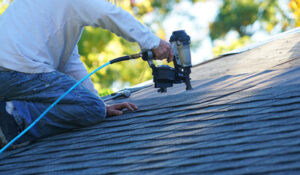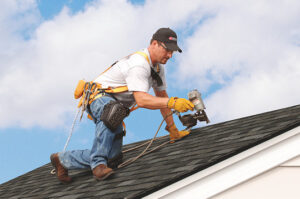Concrete Driveway Colorado Springs is long-lasting, easy to maintain, and boosts your home’s value. It can also be customized with color, engraved messages, and more.
However, laying a concrete driveway is not for the faint of heart. It requires special equipment, a large crew, and plenty of time.

Concrete is a sturdy material that can last homeowners 30 years or more with proper maintenance. It can be formed into nearly any shape, texture or color to enhance curb appeal and elevate your home’s value.
The lifespan of a concrete driveway depends on many factors. The type of pavement, where it is located, how much traffic it receives, and whether or not it is sealed will all affect its longevity. Weather conditions also play an important role. Concrete that is exposed to rain and snow regularly experiences freeze-thaw cycles that can weaken it over time. In addition, UV rays from the sun can break down the cement surface and shorten its lifespan.
When constructing a concrete driveway, it is important to use a high-quality concrete mix and rebar. Rebar is stronger than wire mesh and helps to prevent the formation of stress cracks. It is also advisable to choose a concrete mix that is designed for new construction, as these formulations contain more cement than typical mixes. This can help to resist damage from de-icing salts that can corrode steel reinforcement bars over time.
Regular maintenance is also key for a long-lasting concrete driveway. Sweeping and plowing the concrete frequently will remove dirt and debris and prevent it from becoming embedded in the surface. Salt and other de-icing chemicals should be avoided whenever possible as they can eat away at the surface and cause damage to the structural integrity of the concrete. Using natural traction enhancers, like sand or wood chips, can reduce the need for salt and de-icing chemicals.
If your concrete driveway is properly cured and protected, it can withstand many years of heavy traffic and exposure to the elements. Regularly filling stress cracks, cleaning the surface and applying a high-quality penetrating sealer will protect your concrete from wear and tear and prolong its life.
Another way to ensure the durability of your concrete driveway is by ensuring that it is properly sloped. A sloped concrete driveway will allow water to naturally flow away from the slab instead of pooling on it. This can prevent a buildup of moisture under the slab that can weaken it and cause sinking.
Concrete is generally quite low maintenance and does not require much more than periodic cleanings and resealing. This is in contrast to asphalt, which can become damaged from weather and sunlight extremes and needs frequent repairs.
A concrete driveway is also an eco-friendly option since it requires less energy to maintain than asphalt, which can be created using fossil fuels and requires extensive mining and processing. In addition, the durability of concrete means that it lasts longer than other types of materials, further reducing the need for waste.
The durability of a concrete driveway can also add to the overall value of your home as well as reduce the cost of maintenance and repairs. It can withstand heavy loads and the weight of parked vehicles, making it suitable for most homes. However, it is important to select the location carefully, taking into consideration future plans for your home or other building projects that may interfere with the driveway.
To help prevent damage to a concrete driveway, be mindful of how you park your vehicle. This is especially important around the edges, which are typically the weakest points. Avoid parking in the same spot long-term, as this can put undue stress on the surface and cause it to crack or shift.
Also, be sure to keep the area around your concrete driveway free of debris that can weigh down on it. This includes removing items from the driveway after each use. You should also make sure to regularly check the gutters to ensure they are not clogged, which could lead to water pooling on the concrete and causing damage. Additionally, tree roots can cause damage if they grow close to the surface and cause the concrete to heave and crack. It is a good idea to plant trees and other plants far from your driveway to prevent this issue.
Another way to minimize the risk of damage is to be cautious about the use of de-icing chemicals. While they can be effective in melting ice, they can also cause the concrete to spall or heave. Ideally, you should use a sand-based product that won’t do any harm to the surface of the concrete.
Concrete is versatile and lends itself to a range of design options that elevate driveways beyond the functionality of a simple transport surface. From exposed aggregate to a concrete stain, homeowners can create unique and eye-catching designs that complement their home’s exterior aesthetics, elevate curb appeal, and boost property values.
Concrete can be stained with a variety of colors, including neutral tones and more vibrant shades that work well with many different architectural styles. Staining the concrete creates a unique, one-of-a-kind look that can instantly transform a basic grey driveway into a stunning feature piece that elevates a home’s landscape design.
While broom finish is the most common concrete driveway surface option, there are several other style options available as well. For example, stamped concrete is a popular choice because it allows homeowners to imitate the appearance of other materials such as pavers, bricks, or stones without the expense and maintenance of those materials. This type of concrete driveway can be stamped with geometric shapes, imprinted with planters, and more, making it a versatile and customizable style option that will suit most any homeowner’s aesthetic preferences.
A textured concrete finish is another attractive style option that is created by mixing aggregates such as pebbles, shells, or rock salt into the ready mixed concrete during the pouring process and then sanding back the mix once it has stiffened. This type of concrete provides a nuanced, textured look to the concrete that is an excellent choice for sloping driveways as it helps them to stay stable.
Another type of textured concrete is slate concrete, which is created by stamping slate textured mats into the concrete during the stiffening stage and prior to it becoming fully hardened. This gives the concrete a distinct and authentic slate or stone look that can add to a home’s landscaping design while also elevating curb appeal.
Adding a concrete paver walkway to a concrete driveway is another great way to elevate the aesthetics of a home. These interlocking pavers are available in a variety of styles and colors to match most any homeowner’s tastes and provide a seamless transition between the driveway and the rest of the garden.
A concrete driveway adds value to your home because of its durability and ease of maintenance. In addition, it offers a high level of customization options. You can stain, stamp, etch, and color concrete to create a design that is unique and appealing to you. This feature is attractive to future home-buyers and can potentially increase your resale value.
A poured concrete driveway is also environmentally friendly. Unlike asphalt, which requires a large amount of nonrenewable petroleum resources to produce and place, a concrete driveway uses abundant natural rock and sand. Ready-mix suppliers can even use waste materials such as fly ash and ground blast furnace slag to replace part of the cement, which saves energy and keeps these materials out of landfills.
Concrete is also child, pet and barefoot-friendly. It’s lighter in color, so your kids and pets can play on it without worrying about burning their feet. Additionally, concrete is easier to clean than asphalt and won’t get as hot in the summer.
Whether you’re planning to sell your home soon or just want to make it look more attractive, a new concrete driveway is a great way to improve its curb appeal. It’s also a great investment because you can expect to recoup the cost of the project when it comes time to sell.
You can also increase your resale value by adding landscape elements to complement the concrete driveway, such as plants, flowers, and shrubs. Keeping the landscaping neatly maintained and attractive is a good idea, as potential buyers will be impressed by the curb appeal.
If you’re considering a concrete driveway, it’s important to hire a professional contractor to ensure that the work is done correctly. A professional knows what techniques to use and how to handle different types of concrete. In addition, a professional will have the right equipment to complete the job quickly and efficiently. Moreover, a professional will be able to give you advice about the best type of concrete for your climate and conditions.




